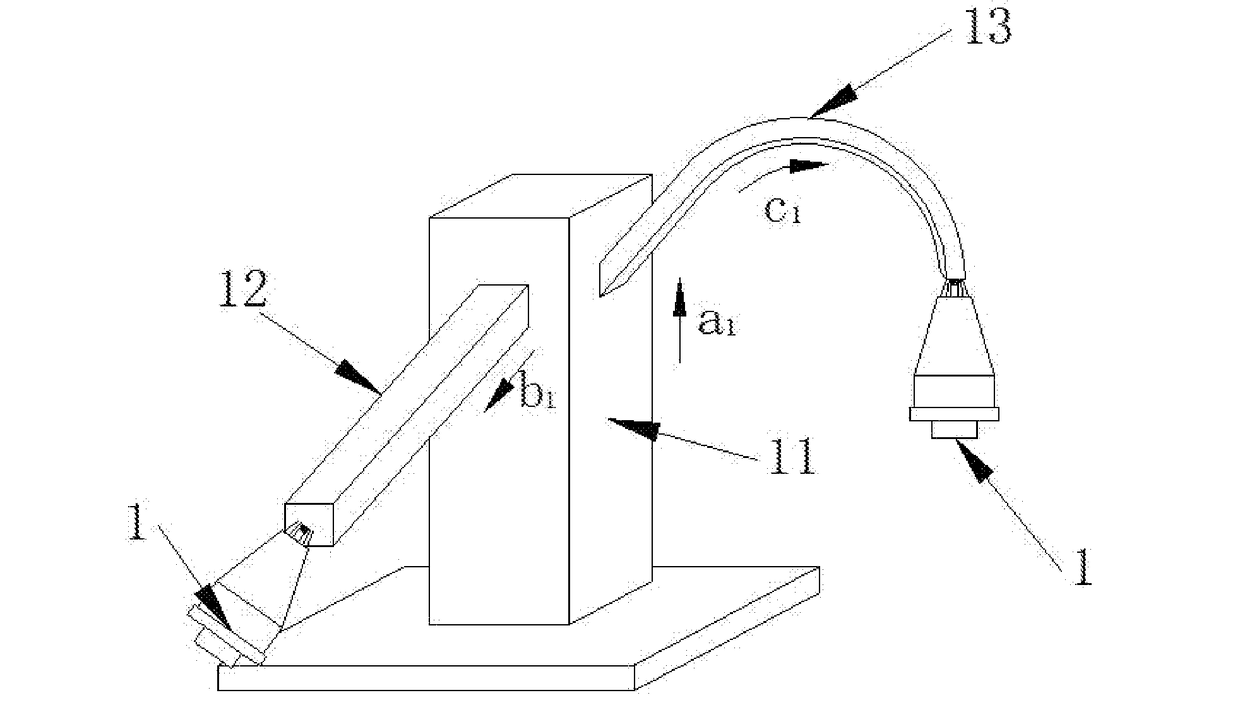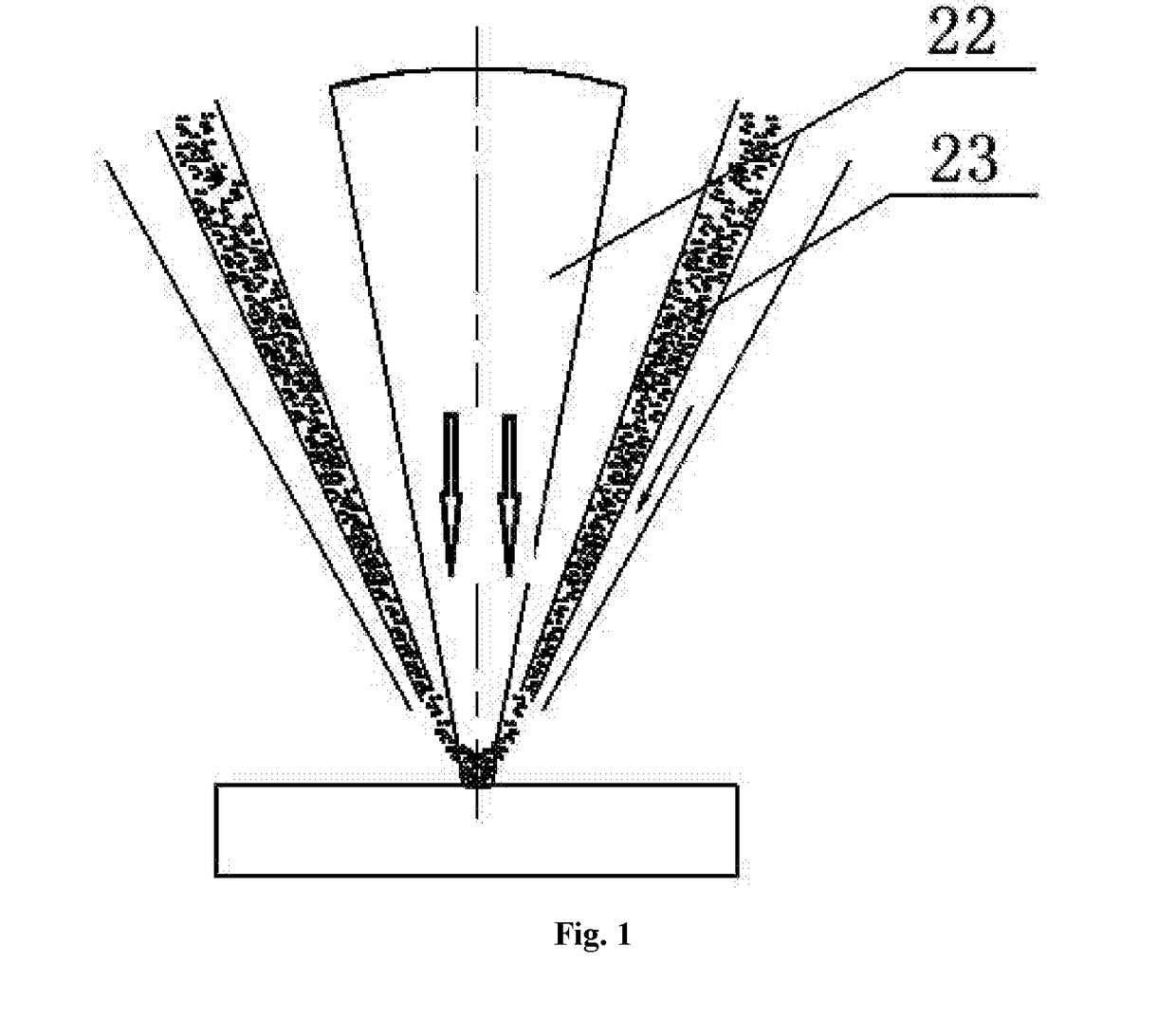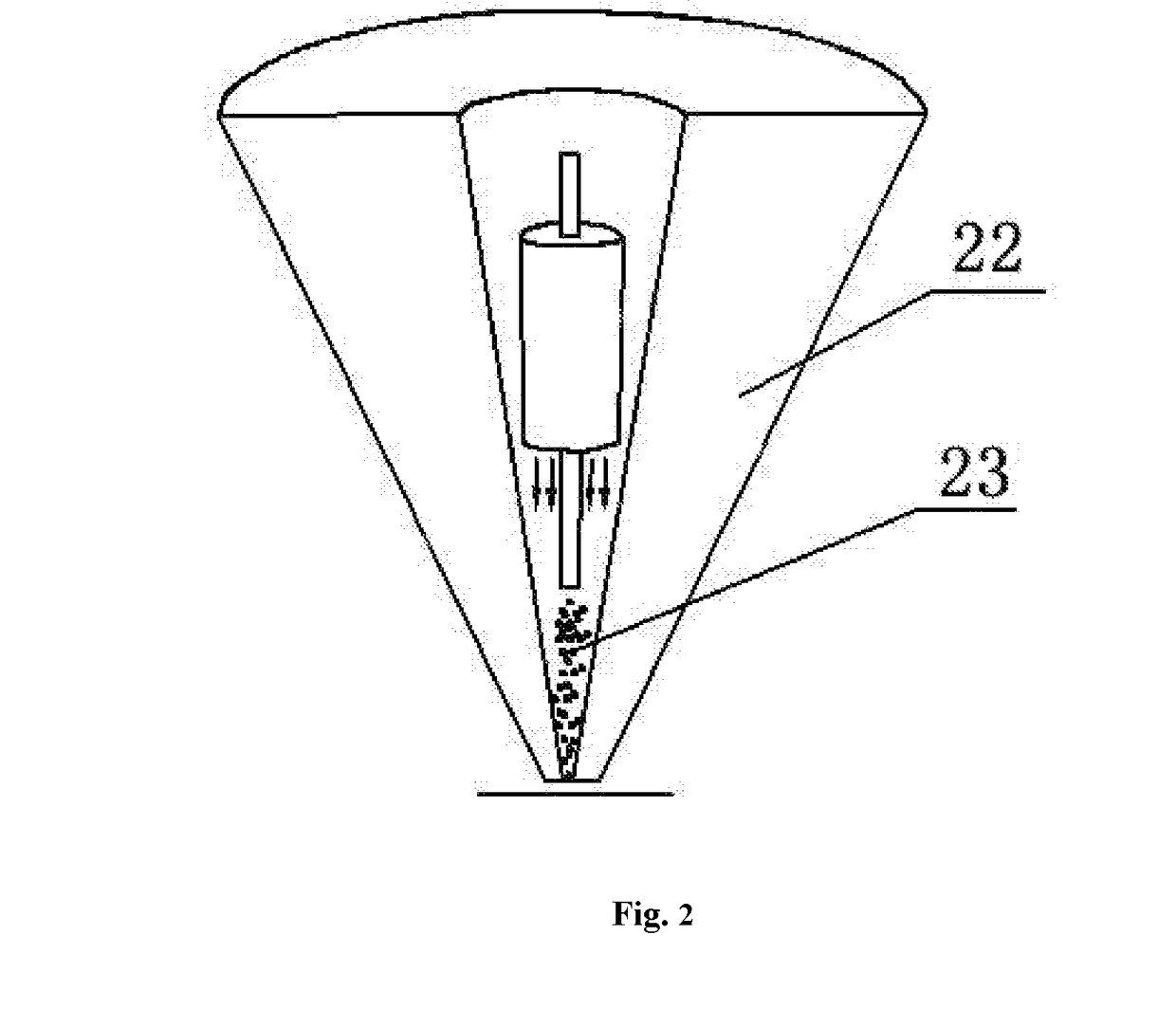Synchronous powder-feeding space laser machining and three-dimensional forming method and device
a laser machining and synchronous technology, applied in the field of laser processing forming technology, can solve the problems of limited forming size, high cost, difficult coupling, etc., and achieve the effects of improving forming accuracy, simple powder beam track, and easy control
- Summary
- Abstract
- Description
- Claims
- Application Information
AI Technical Summary
Benefits of technology
Problems solved by technology
Method used
Image
Examples
example 1
[0038]A method for synchronous powder-feeding space laser cladding and three-dimensional forming is provided, comprising the following steps:
[0039](1) Dividing a multi-branch complex three-dimensional solid expected to be formed into one or more forming units based on the body simplification and nozzle cladding scanning accessibility principle, and selecting the forming sequence of each unit in turn, with each forming unit having a respective optimal forming growth direction and rule;
[0040](2) dividing the forming unit obtained in the step (1) into a number of layers along the stacking accumulating direction, each layer at least including one of the filling region and the boundary region;
[0041](3) using a hollow annular laser inside-laser single-beam gas-carried powder-feeding method to control a mechanical arm to drive an inside-laser powder-feeding nozzle to scan and move in the boundary region and the filling region of a layer along a predetermined track, so as to complete claddi...
example 2
[0047]As shown in FIG. 6, dividing the three-branch three-dimensional forming into three simple-shaped forming units a, b and c according to the body simplification and inside-laser powder-feeding nozzle accessibility principle; wherein the forming unit a11 has a forming growth direction a1, the forming unit b12 has a forming growth direction b1, and the forming unit c13 has a forming growth direction c1. The forming sequence is as follows: First forming the forming unit a11, then controlling the mechanical arm 7 to move the inside-laser powder-feeding nozzle 1 to the start position of the forming unit b12 to form the forming unit b12 on the sidewall of the forming unit a11, and then controlling the mechanical arm 7 to move the inside-laser powder-feeding nozzle to the start position of the forming unit c13 to form the forming unit c13 on the other side of the forming unit a11, and so on, until completing the unit accumulation of the entire three-branch three-dimensional solid.
example 3
[0048]The synchronous powder-feeding space laser cladding and three-dimensional forming of the curved overhanging structural part is shown in FIGS. 7 and 8, which uses a zoning method, dividing the forming unit along the optimal growth accumulation direction into a number of layers, with each layer divided into a boundary region 18 and a filling region 16. The layering principle of the boundary region 18 is as follows: Always slicing along a direction perpendicular to the boundary face 17, i.e. along the normal direction of the boundary face; when the boundary face is straight faced, the layers are parallel to each other; when the boundary face is a curved surface, the layers can be neither parallel to each other nor equal in thickness. The layering principle of the filling region 16 is as follows: All the layers are parallel to the base surface 19 and also parallel to each other. After cladding forming a layer, the nozzle retreats by a distance of thickness of one layer along the g...
PUM
| Property | Measurement | Unit |
|---|---|---|
| length | aaaaa | aaaaa |
| length | aaaaa | aaaaa |
| thickness | aaaaa | aaaaa |
Abstract
Description
Claims
Application Information
 Login to View More
Login to View More - R&D
- Intellectual Property
- Life Sciences
- Materials
- Tech Scout
- Unparalleled Data Quality
- Higher Quality Content
- 60% Fewer Hallucinations
Browse by: Latest US Patents, China's latest patents, Technical Efficacy Thesaurus, Application Domain, Technology Topic, Popular Technical Reports.
© 2025 PatSnap. All rights reserved.Legal|Privacy policy|Modern Slavery Act Transparency Statement|Sitemap|About US| Contact US: help@patsnap.com



